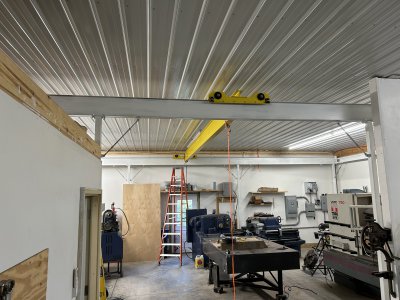- Joined
- Nov 24, 2014
- Messages
- 3,159
I'm surprised that you have 'relieved' the center 1/2 (?) of the rollers.
How much safety margin is surrendered by supporting the bridge on the cantilevered flanges, rather than directly over the webs of the I beams?
How much safety margin is surrendered by supporting the bridge on the cantilevered flanges, rather than directly over the webs of the I beams?


